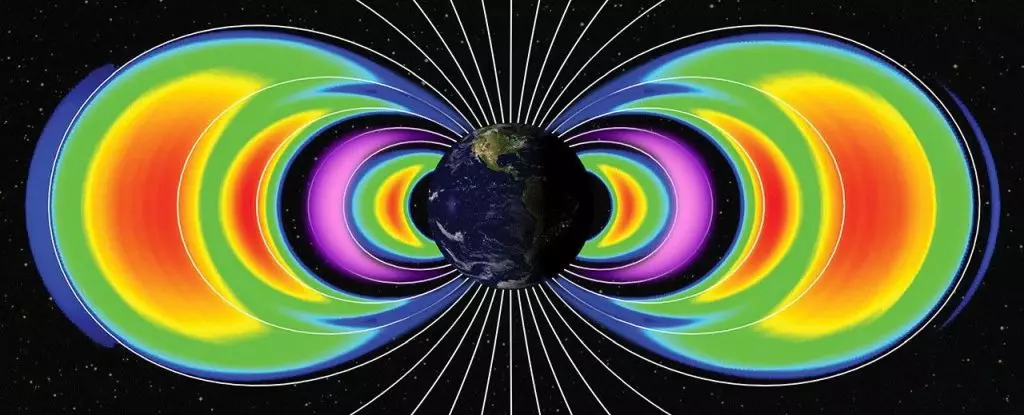In an extraordinary display of cosmic power, May 2024 witnessed a solar storm of unprecedented intensity that reverberated through the layers of our atmosphere and penetrated even the dark depths of the ocean. As a barrage of solar flares erupted from the Sun, Earth was enveloped in a cascade of energized particles, leading to dramatic effects on both our magnetic field and atmospheric phenomena. The storm sparked vibrant auroras, typically confined to higher latitudes, illuminating skies far closer to the equator. However, the influences of this solar tempest extended much deeper, profoundly affecting the magnetic tapestry surrounding our planet.
The solar storm’s aftermath revealed the emergence of two temporary radiation belts composed of high-energy particles. These belts, ensnared by Earth’s magnetic field, were not merely extensions of existing protection; they carried a new discovery that reshaped our understanding of solar and geomagnetic interactions. Scientists were astonished to find the presence of energetic protons in one of these newly formed belts, an anomaly that suggests a rich and complex dynamic at play in the Earth-sun relationship.
Radiation belts are an inherent feature of planetary systems endowed with global magnetic fields. They form as stellar winds—streams of charged particles perpetually emitted by stars—interact with the magnetic fields of nearby planets. Earth is usually shielded by two well-known structures: the Van Allen belts, which envelop the planet like a protective cocoon.
The revelations following the May 2024 solar storm were groundbreaking. Utilizing data gathered from NASA’s Colorado Inner Radiation Belt Experiment CubeSat, researchers uncovered two new belts situated between the existing Van Allen belts. One was dominated by electrons, a predictable outcome, while the other unveiled a layer of energetic protons, a phenomenon previously unobserved following solar storms. This unexpected finding has significant implications for our comprehension of the complex interplay between solar activity and Earth’s magnetic protection.
As physicist Xinlin Li astutely observed, the post-storm data suggested groundbreaking revelations about our planet’s immediate environment. Such findings have propelled scientists to reconsider the types of particles that can become trapped within our magnetic field and the conditions that enable them to do so.
The newly formed radiation belts demonstrated an unprecedented longevity, persisting for three months—a stark contrast to the typical existence of temporary belts lasting only a few weeks. This remarkable endurance of high-energy electrons and protons in Earth’s inner magnetic environment invited questions regarding their future stability. The belts faced further disruptions from subsequent solar storms in June and August of 2024; however, a portion of the energetic particles continued to linger in orbit.
The potential ramifications of this discovery extend beyond academic curiosity. High-energy particles in Earth’s vicinity pose a tangible threat to satellites, spacecraft, and other technological infrastructure orbiting the planet. The ability to gauge the density and behavior of these particles is critical for engineering resilient space technology capable of sustaining prolonged exposure to such environments.
At present, the risk associated with the newly identified radiation belts remains largely undefined. Future research is essential to elucidate the implications of these finding, particularly concerning the longevity and degradation rate of the proton belt. Understanding how these energetic particles interact with existing satellites is vital for devising strategies to protect such instruments from potential hazards.
The findings postulated by the May 2024 solar storm serve as a reminder of the vast, interconnected dynamics of our solar system. As scientists continue to monitor these temporary radiation belts, we inch closer to unraveling the complex relationship between solar activity and Earth’s protective magnetic shield. Such insights not only deepen our understanding of space weather but also spotlight the continuous evolution of our technological defenses against the cosmos—proposing that when stars interact with planets, they can shape our lives in both expected and wholly unexpected ways.

